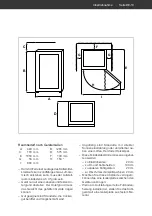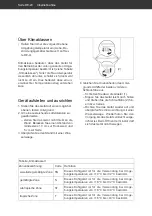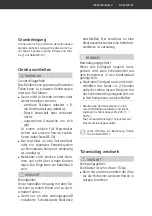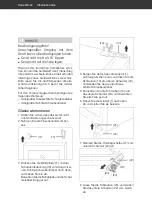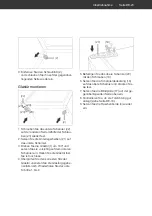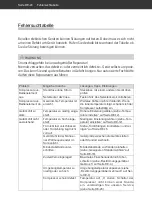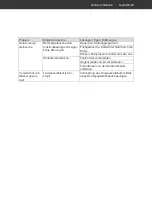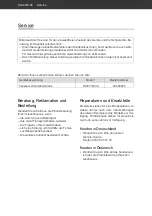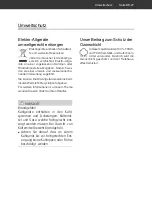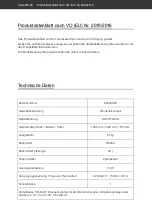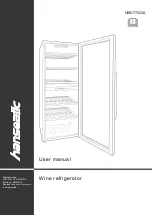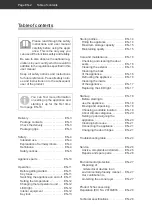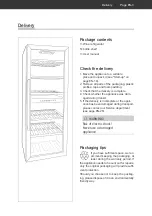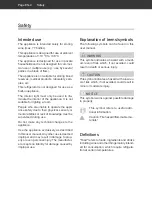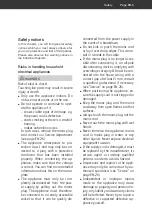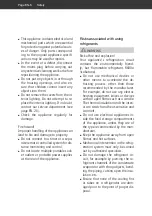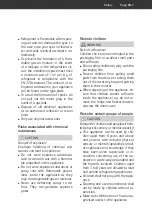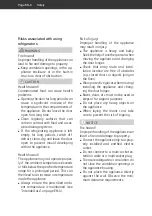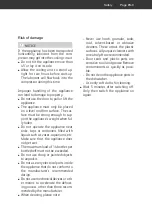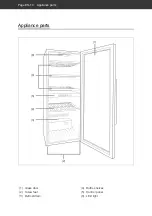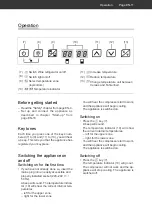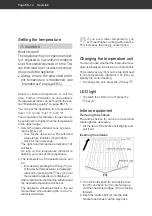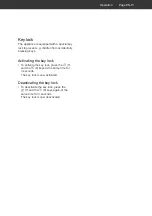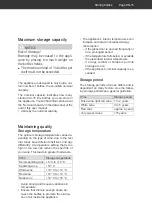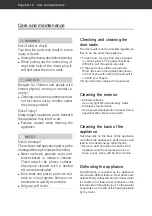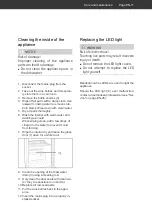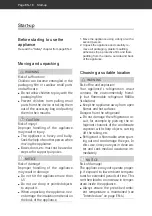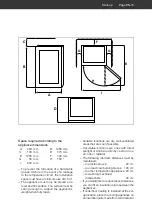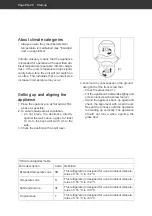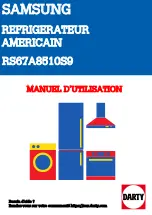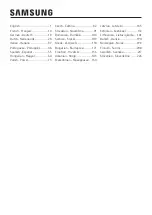
Safety
Page EN-5
Safety notices
In this chapter, you will find general safety
notices which you must always observe for
your own protection and that of third parties.
Please also observe the warning notices in
the individual chapters.
Risks in handling household
electrical appliances
WARNING
Risk of electric shock!
Touching live parts may result in severe
injury or death.
■
Only use the appliance indoors. Do
not use in wet rooms or in the rain.
■
Do not operate or continue to oper-
ate the appliance if it
–
shows visible signs of damage, e.g.
the power cord is defective,
–
starts smoking or there is a smell of
burning,
–
makes unfamiliar noises.
In such cases, remove the mains plug
and contact our Service department
(see page EN-26).
■
The appliance corresponds to pro-
tection class I and may only be con-
nected to a plug with a protective
conductor that has been installed
properly. When connecting the ap-
pliance, make sure that the voltage
is correct. You can fi nd more detailed
information about this on the name-
plate.
■
The appliance must only be com-
pletely disconnected from the pow-
er supply by pulling out the mains
plug. The appliance must, therefore,
be connected to an easily accessible
socket so that it can be quickly dis-
connected from the power supply in
the event of a breakdown.
■
Do not kink or pinch the mains cord
or lay it over sharp edges. This can re-
sult in a break in the cable.
■
If the mains plug is no longer acces-
sible after connecting it, an all-pole
disconnecting device complying with
overvoltage category III must be con-
nected into the house wiring with a
contact gap of at least 3 mm; consult
a qualifi ed professional if necessary
(see "Service" on page EN-26).
■
When positioning the appliance, en-
sure the supply cord is not trapped or
damaged.
■
Keep the mains plug and the mains
cord away from open fl ames and hot
surfaces.
■
Always touch the mains plug, not the
mains cord.
■
Never touch the mains plug with wet
hands.
■
Never immerse the appliance, mains
cord or mains plug in water or any
other liquids. Never expose electrical
equipment to water.
■
If the supply cord is damaged, it must
be replaced by the manufacturer, its
service agent or similarly qualifi ed
persons in order to avoid a hazard.
■
Inspections and repairs to the appli-
ance may only be carried out by au-
thorised specialists (see "Service" on
page EN-26).
■
Independent or improper repairs
made to the appliance may cause
damage to property and personal in-
jury; any liability and warranty claims
will be forfeited. Never try to repair a
defective or suspected defective ap-
pliance yourself.

